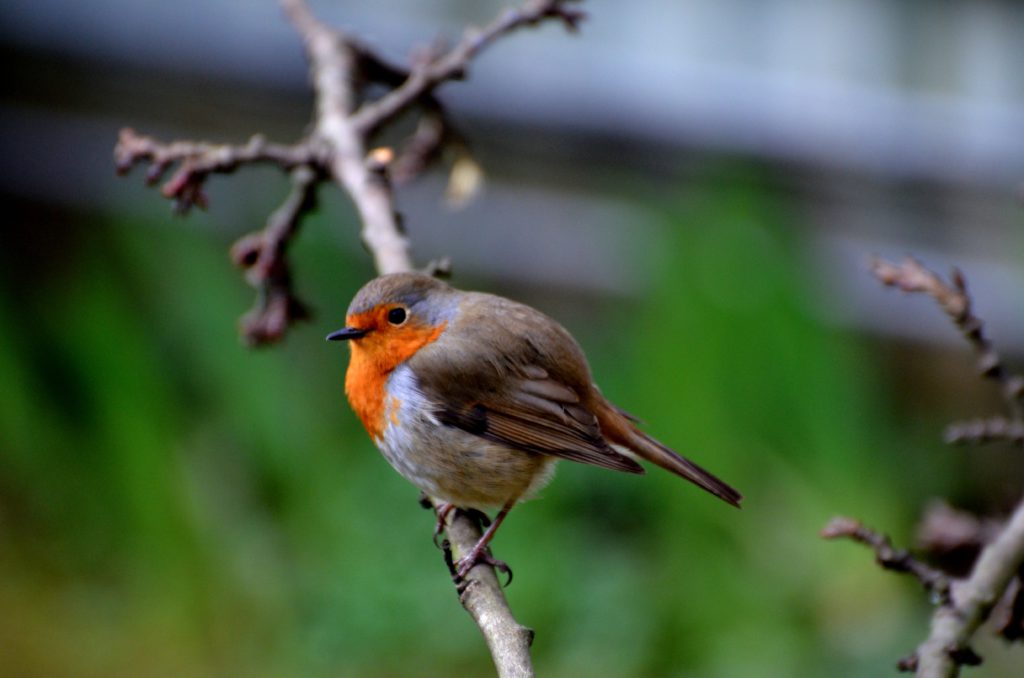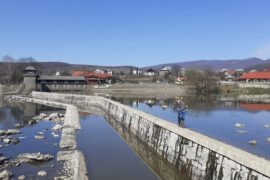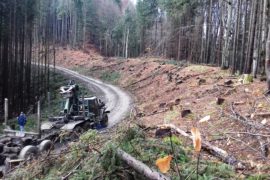The flora of the region has over 3980 species and subspecies of vascular plants, accounting for 31.2% of Europe’s floral wealth and 50% of Ukraine’s floral wealth. Vertebrate fauna includes 435 animal species, representing 68% of Ukraine’s fauna. As of 2018, plants and fungi of the following protected categories are growing in Transcarpathia: 213 species listed in the CCU, 10 species listed in the Annexes to the Berne Convention and 3 species from the European Red List. Among all animals that occur in Transcarpathia, 185 species are listed in the CCU, 22 species are listed in Annexes to the Convention on the International Trade in Endangered Species of Wild Fauna and Flora, 244 species listed in the Annexes to the Bern Convention, 16 species, listed in Annexes to the Bonn Convention and 6 Species Conserved under the Conservation Agreement for Afro-Eurasian Migratory Wetlands, 23 Species Conserved under the Conservation Agreement for European Bats and 67 Species of European Red list.
Most of the rare species of animals and plants in the area are protected within the territories and sites of the PFP. Today, the territories and sites of the PSF in Transcarpathia are 469 with a total area of 180698.9198 hectares, which occupy 14.17% of the territory of the region. Among them are 4 objects of national importance with their own administrations.
To fulfill the objectives of the Berne Convention on the Conservation of Species and Habitats, 11 sites of the Emerald Network have been approved by the Council of Europe in Transcarpathia. For the implementation of the Convention on Wetlands of International Importance, mainly as a habitat for waterfowl in Transcarpathia, 2 sites with an area of more than 2 ha, which make up about 3% of the territory of the region, have been declared wetlands, which are protected by the Ramsar Convention.
The greatest threat to the high biodiversity of the rivers of Transcarpathia are projects related to the development of small hydropower, ie the construction of small hydropower plants and cascades of small hydropower on mountain rivers, especially in the absence of an ecosystem approach to natural resource management practices in the region. In the context of significant redistribution of precipitation due to global climate change and the fall of groundwater for Transcarpathia, it is more rational to develop micro-energy, which does not involve the derivation and construction of a backwater dam. River ecosystems also suffer from poor logging practices in forests. Large-scale projects for the industrialization and urbanization of mountain valleys and highlands of the Alpine mountains, related to the development of energy and large tourist sites, from uncontrolled jeeps and motorized driving, contribute to the reduction of biodiversity in the highlands. Increased biodiversity in forest ecosystems will be facilitated by practices close to the nature of forestry, such as dramatic changes in logging technology, increasing the amount of dead wood in the forest, reclamation of trains and creating conditions for the retention of water runoff in the forest, monitoring nesting nesting sites.
Projects implemented by Ecosphere NGO in the field of biodiversity research and conservation:
| Financial support | Cross-border cooperation program Hungary-Slovakia-Romania-Ukraine ENPI 2007-2013 |
| Project name | Sustainable management of natural resources in the Tisza-Tur river interbank |
| Sphere | Biodiversity, protected areas, wetlands |
| Sphere of influence of the project | Transcarpathian region of Ukraine, Zatysianshchyna |
| Leader of the project | Tysa River Basin Management |
| Partner organizations of the project | Ecosphere NGO, Upper-Tysai Water Affairs Directorate (Hungary), Somesh-Tysa Water Directorate of the National Water Authority of Romania, Vynohradiv RDA, Vynohradiv Interregional Water Management Department, State Transcarpathian Center of Oblast State. |
| Duration of the project | 24 months (2013-2015) |
| Short information about the project: | |
| The biodiversity of the Botar River valley has been investigated. According to the research results, a scientific monograph was published «Biodiversity of the Tisza-Tour inter-river basin: assessment of the current state and conservation measures». A botanical reserve of local importance Botar (277.1 hectares) and a botanical reserve of local importance Holmovets Mountains (290 hectares) were created. Proposals have been submitted to the Ministry of Ecology and Natural Resources for the creation of the Emerald Network of Ukraine on the Botar River (part of the natural floodplain). | |
| Financial support | Cross-border cooperation program Hungary-Slovakia-Romania-Ukraine ENPI 2014-2020 |
| Project name | Joint measures for the prevention of natural disasters in the transboundary basin of the Uzh river (FloodUZH) |
| Sphere | Biodiversity, sustainable water management |
| Sphere of influence of the project | Transcarpathian region of Ukraine, Zatysianshchyna |
| Leader of the project | Tysa River Basin Management |
| Partner organizations of the project | Ecosphere NGO, Kosice Water Management Department (Slovakia), Uzhhorod City Council |
| Duration of the project | 24 months (2019-2021) |
| Short information about the project: | |
| Biodiversity studies will be conducted in the Uzh basin, with a focus on the Uzhhorod region, shallow water that has been observed in recent years has a negative impact, including the appearance of atypical invasive species, and the impact of the regulatory structure on the environment has been investigated. There will also be educational work with schoolchildren and outreach activities for the city’s public to provide residents with comprehensive information about the building, its impact and benefits to the public. | |






